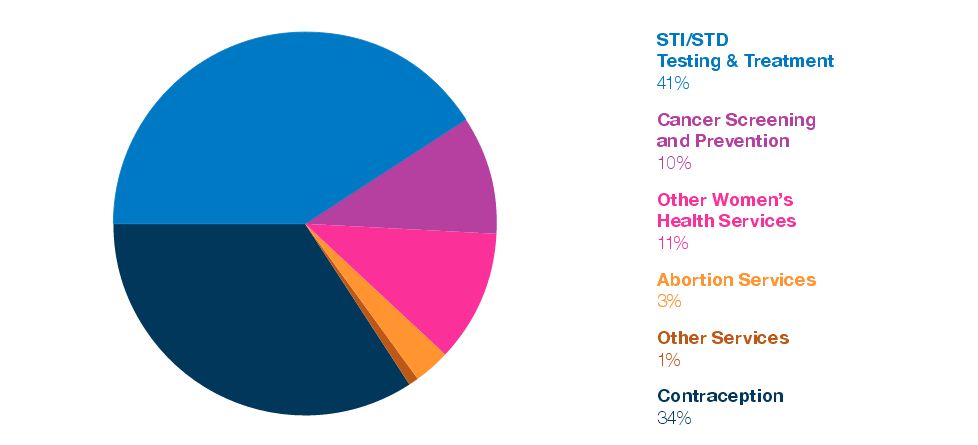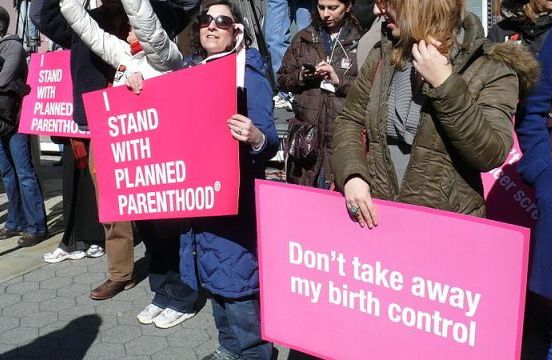planned parenthood: beyond abortion
If you so much as logged in to social media in the past few months, you’ve likely seen two hashtags surface: #IStandWithPP and #PPSellsBabyParts. In July, a video surfaced from an anti-choice organisation that allegedly showed Senior Director of Medical Services at Planned Parenthood, Dr Deborah Nucatola, addressing the sale of fetal organs and body parts.
The video took the internet by storm, and despite Planned Parenthood’s letter to Congress outlining the substantial, deceptive editing in the anti-abortion video campaign, The House of Representatives recently approved a bill that would effectively cease federal funding to Planned Parenthood for an entire year. The bill is unlikely to pass in the senate, and the president vowed to veto any form of legislation that removes federal funding for Planned Parenthood from the budget, but it’s important to take a look at the implications caused by this kind of legislation should it become law.

Patient care provided by Planned Parenthood affiliate health centres from 2011-2012 (Via Planned Parenthood)
As indicated by the graph above, a large majority of Planned Parenthood’s services aren’t abortion specific, and by law no abortions performed at Planned Parenthood use funds from the federal government.
A majority of the patient care Planned Parenthood offers is preventative in nature, and it’s safe to argue that these services have made a huge impact on reproductive health. Teen pregnancy rates have been on a steady decline since 1991, HIV infection rates have decreased by 21% since 1997, and studies suggest that HPV vaccinations have led to drastic reductions in pre-cancerous cervical cells for young women. Cutting off federal funding from Planned Parenthood in an effort to restrict abortion services places these services, along with anemia testing, cholesterol and diabetes screenings, physical exams, vaccinations, and sex education, at risk.
These are invaluable resources given that in some rural places, Planned Parenthood is the closest clinic, and for poor women, oftentimes Planned Parenthood is the only healthcare provider that accepts Medicaid. In over two-thirds of counties with a Planned Parenthood clinic, the clinics serve at least half of all women receiving publicly funded contraceptive services; in one-fifth of the counties, Planned Parenthood serves them all. If passed, the bill would prevent nearly 400,000 low-income women from having access to healthcare.
Planned Parenthood cutting budgets and closing facilities would also add to an already strained and understaffed health care field. Primary care nurses and facilities are already overwhelmed due in part to the 6.7 million Americans who signed up for full healthcare coverage under the Affordable Care Act in 2014, coupled with an aging nursing population on the verge of retirement.
Clearly, there are stark partisan divides whenever Planned Parenthood is mentioned, but public opinion overwhelmingly sides with Planned Parenthood, with 60% of the population agreeing that the budget should maintain funding for Planned Parenthood. That support has been shown throughout the past few months in social media campaigns aiming to show the importance and positive affects that the organisation has had on people’s lives. Hashtags like #shoutyourabortion helped highlight positive experiences with Planned Parenthood and help destigmatise the abortion narrative. Similarly, #IStandWithPP is a platform where individuals expressed their concern with women’s bodies being used as political pawns.
Clearly, Planned Parenthood as an organisation is an important staple to the U.S. healthcare community, and regardless of individuals’ feelings about abortion as an ethical practice, the impact that federal budget cuts would have is substantial for poor rural communities. It’s important that the organisation be viewed as necessary for not only maintaining women’s rights to a safe abortion, but also to recognise that Planned Parenthood be recognised for the other incredible and necessary services that it performs on a day-to-day basis.



The fact is that abortions are being done and if the tisue from these can be of benefit with the mothers permision then that is how it should be.